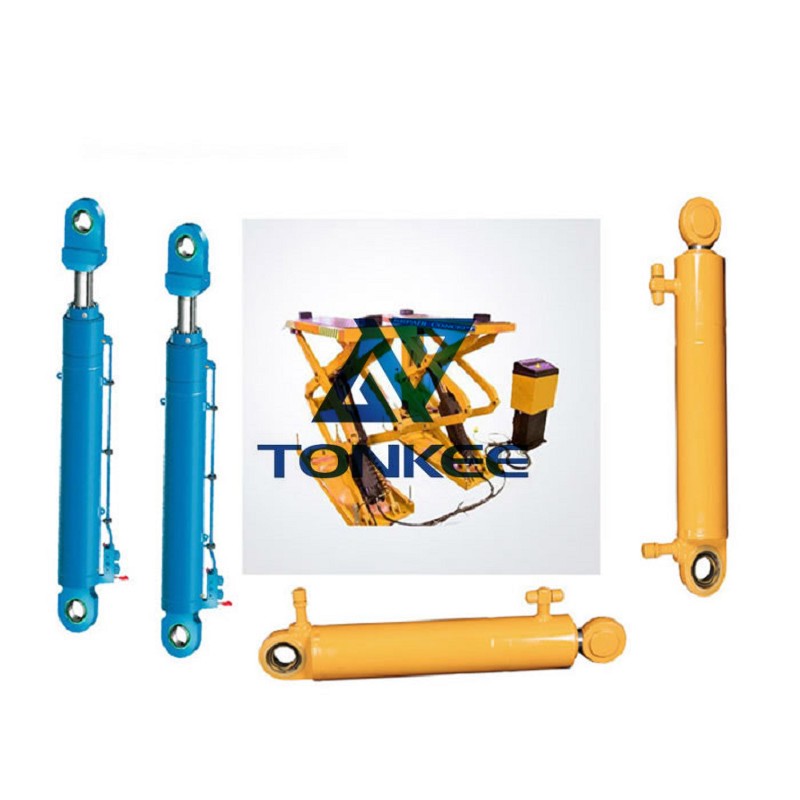
The size and capacity of the hydraulic cylinder depend on the specific requirements of the scissor lift.
Typically, these cylinders range from small-scale lifts used in automotive repair shops to large industrial scissor lifts used in construction and warehousing. The capacity of the cylinder is determined by the maximum load the lift needs to handle. It can range from a few hundred pounds for a small lift to several tons for heavy-duty industrial applications.
Cylinder Type:
There are various types of hydraulic cylinders suitable for scissor lifts. The most common types include single-acting and double-acting cylinders. Single-acting cylinders use hydraulic fluid to extend the piston, but rely on external forces like gravity or a spring to retract it. Double-acting cylinders use hydraulic fluid for both extension and retraction, offering more control over the scissor lift's movement.
Material and Construction:
Hydraulic cylinders are typically constructed from high-strength steel or other durable materials to withstand the heavy loads and pressures they encounter during operation. The choice of material should take into account factors such as corrosion resistance, weight, and cost.
Bore Diameter and Rod Diameter:
The bore diameter refers to the internal diameter of the cylinder barrel, while the rod diameter is the diameter of the piston rod. These dimensions are critical as they determine the force output and speed of the hydraulic cylinder. Larger bore diameters and rod diameters generally result in higher lifting capacities and faster lifting speeds.
Stroke Length:
The stroke length is the distance the piston rod can travel inside the cylinder. It should be chosen based on the maximum height the scissor lift needs to reach. Longer strokes allow for greater vertical travel.
Operating Pressure:
The operating pressure refers to the pressure of the hydraulic fluid within the cylinder.
It is essential to select a cylinder that can handle the required pressure to lift the load efficiently and safely. The hydraulic system's pump and other components should also be compatible with the selected operating pressure.
Mounting Options:
The hydraulic cylinder must be designed with appropriate mounting options to integrate seamlessly with the scissor lift structure. Common mounting styles include clevis mounts, flange mounts, and trunnion mounts.
Sealing:
Effective sealing is crucial to prevent hydraulic fluid leakage and ensure the cylinder's long-term performance. High-quality seals and wipers should be used to maintain a clean and well-lubricated interior.
Safety Features:
Safety is paramount in scissor lift applications. Hydraulic cylinders should be equipped with safety features such as pressure relief valves to prevent overloading and cushioning devices to reduce shock and vibration during operation.
Maintenance Requirements:
Regular maintenance is essential to prolong the life of the hydraulic cylinder and scissor lift. Maintenance requirements can vary based on the cylinder's design and the operating conditions. Proper lubrication and inspection of seals and components are typically part of routine maintenance.



 English
English Türkçe
Türkçe


